#anastasia sokolov
Text

#empire of sin#rina kent#knox van doren#anastasia sokolov#read#currently reading#book review#reading#readers of tumblr#2023 reads#tumblr#tumblelog#tumblrpost#books#book blog#bookworm#book tumblr#tumblog#brb swooning#fictional men#fictional women#fictional
18 notes
·
View notes
Text





knoxanastasia headers
• like or reblog if you save/use
• give credits to @knoxanastsia on twitter
#knoxanastasia headers#knoxanastasia#empire of sin headers#empire of sin#rina kent#books#books headers#headers#quotes#header quotes#book headers#booktt#anastasia sokolov#knox van doren#knoxana#knoxana headers
52 notes
·
View notes
Text





Empire of Sin headers
like/reblog if saved © maddiesflame
#headers#empire of sin#knox can doren#anastasia sokolov#rina kent#book headers#knoxanastasia#empire of sin headers#knoxanastasia header#book header#header#rina kent empire#rina kent headers#knox van doren header#anastasia sokolov header#header empire of sin#knoxanastasia headers
25 notes
·
View notes
Text






📖: 𝑬𝒎𝒑𝒊𝒓𝒆 𝒐𝒇 𝑺𝒊𝒏 (𝐸𝑚𝑝𝑖𝑟𝑒 #2) 🤘🏽🦋💻
✍🏽: 𝐑𝐢𝐧𝐚 𝐊𝐞𝐧𝐭
Get the book! 🌟
#empire of sin#empire series#empire#rina kent#anastasia sokolov#knox van doren#knox x anastasia#jane x knox#spicy#spicy reads#spicy books#rough smut#smutty books#virgin heroine#one night stand#double identity#fuck buddy#age gap romance#workplace romance#lawyer romance#insta lust#insta love#mafia#mafia romance#forced proximity#alphahole#jealous boyfriend#libros recomendados#libros#book quotes
11 notes
·
View notes
Text
105 years ago, on the night of 16/17 July 1918, the Romanov family and their attendants were killed in Ekaterinburg.
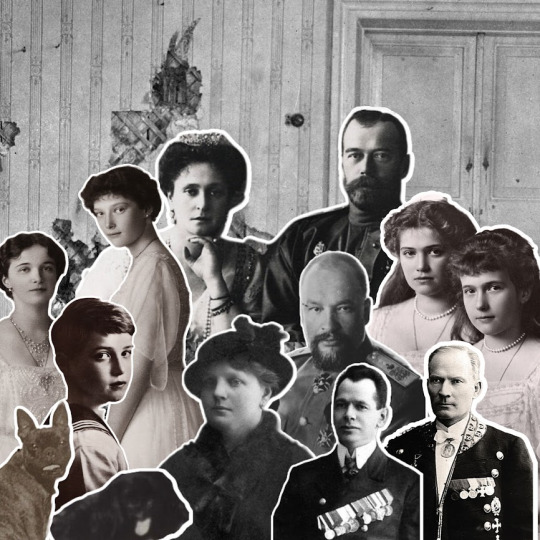
Pierre Gilliard, the beloved tutor of the imperial children, was one of the first people to enter the Ipatiev House after the murders. As part of the Sokolov Investigation into the crime and the subsequent media frenzy, he gave these statements:
“…the stoves; they were all full of various burned articles. I recognised a considerable number of burned things such as tooth- and hair-brushes, pins and a number of small things bearing the initials: "A. F." [Alexandra Feodorovna.]”
"I then went to the lower storey, the greater part of which was a basement. I entered with intense emotion the room in which, perhaps, they had died. Its aspect was most sinister. Daylight came in through a window with iron bars across it. The walls and the floor bore marks of bullets and bayonet thrusts. It was quite obvious that a dreadful crime had been committed there, and that several people had been killed.
In my despair believed that the Emperor had perished, and, that being the case, I could not believe the Empress had survived him… Yes, it was quite possible that they had both been killed. And the children? Had they also been massacred? I could not believe it. The idea was too horrible. And yet everything seemed to prove that the victims had been numerous."
Nicholas II Alexandrovich Romanov (1868-1918)
Alexandra Feodorovna Romanova (1872-1918)
Olga Nikolaevna Romanova (1895-1918)
Tatiana Nikolaevna Romanova (1897-1918)
Maria Nikolaevna Romanova (1899-1918)
Anastasia Nikolaevna Romanova (1901-1918)
Alexei Nikolaevich Romanov (1904-1918)
Dr. Evgeny Sergeievich Botkin (1865-1918)
Anna Stepanova Demidova (1878-1918)
Ivan Mikhailovich Kharitonov (1872-1918)
Alexei Aloise Egorovich Trupp (1856-1918)
Ortipo (1914-1918)
Jimmy (1915-1918)
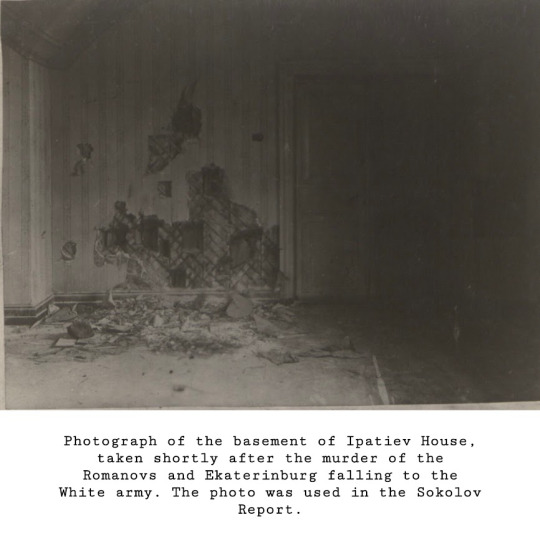









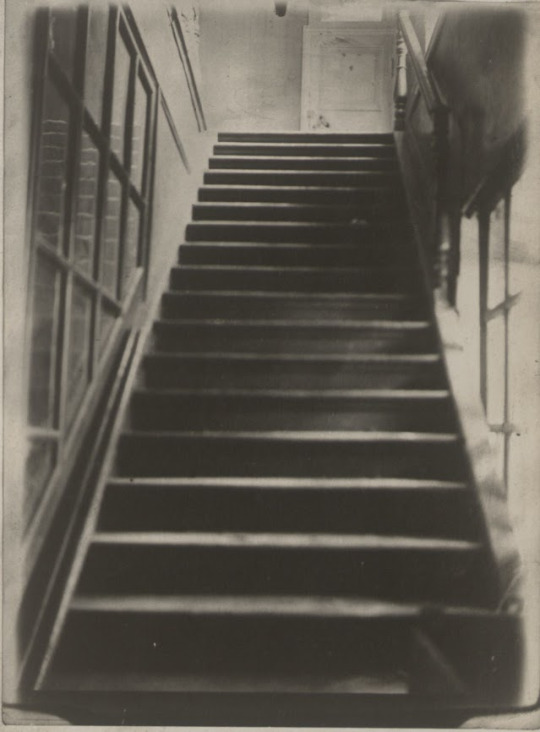
SOURCES:
The Last Days of the Romanovs, Telberg, Wilton, Sokolov. The Crime of Ekaterinburg, Illustrated London News
#olga nikolaevna#tatiana nikolaevna#maria nikolaevna#anastasia nikolaevna#alexei nikolaevich#Tsar Nicholas II#Alexandra Feodorovna#Alexei Trupp#Aloise Trupp#Anna Demidova#Dr. Botkin#Evgeny Botkin#Ivan Kharitonov#Jimmy#Ortipo#OTMA#NAOTMAA#Romanov family#Russian history#imperial russia#Ipatiev House#Ekaterinburg#Nikolai Sokolov#Sokolov Report#sources#Pierre Gilliard#my own
101 notes
·
View notes
Text
The Last Tsar: How Russia Commemorates the Brutal Communist Murder of Emperor Nikolai II's Family
Over 103 years ago, Bolsheviks shattered a royal line that had lasted for over three centuries
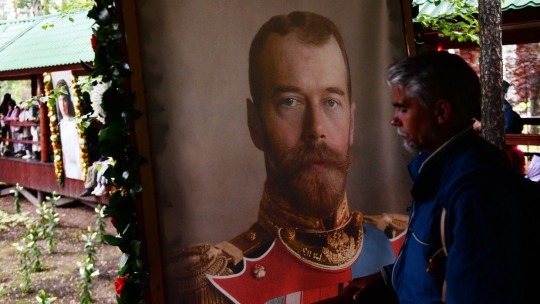
Portrait of Nicholas II at the monastery in the tract of Ganina Yama during the festival 'Royal Days', dedicated to the memory of the Romanov family, in Yekaterinburg. © Sputnik/Pavel Lisitsyn
On the night of July 16-17, 1918, the Bolsheviks shot the family of the last Russian tsar, Nicholas II. Eleven people were killed in total: The emperor, the empress, five of their children, and four royal servants. The remains were secretly buried in an abandoned mine, the location of which was hidden until the collapse of the Soviet Union.
The family of Nicholas II was subsequently canonized by the Russian Orthodox Church, and for the last 30 years, in mid-July, Christians from all over the world participate in a church procession from the murder site in Ekaterinburg to a monastery in Ganina Yama. An RT correspondent learned the story of this extrajudicial massacre and talked to pilgrims about their attitude to the Holy Royal Passion-Bearers.
In March of 1917, before the October Revolution, Russia’s provisional government decided to arrest the royal family. At first, the Romanov's lived at Tsarskoye Selo, but in August, they were forced to go to Tobolsk. In the spring of 1918, the group was moved to Ekaterinburg, where they stayed in the house of an engineer named Nikolay Ipatiev, which had been requisitioned by the Bolsheviks, and sometimes received food from the nuns of the Novo-Tikhvin convent.
On the night of July 16-17, 1918, Nicholas II, Empress Alexandra Feodorovna, Grand Duchesses Anastasia, Tatiana, Olga, and Maria, Tsarevich Alexei, imperial doctor Evgeny Botkin, imperial cook Ivan Kharitonov, the empress’ housemaid Anna Demidova, and the tsar’s valet Aloysius Troup, were all shot by Bolsheviks under the command of Yakov Yurovsky.
Shortly afterwards, the murder of the royal family was investigated by Nikolay Alekseevich Sokolov, a judicial investigator for particularly important cases with the Omsk District Court. The civil war between the Communists and their opponents was still raging in Russia in 1918. On July 25, anti-Bolshevik forces from the Siberian army occupied Ekaterinburg.
At the beginning of February 1919, Sokolov was summoned by the Supreme Governor, Admiral Alexander Kolchak, and instructed to launch an investigation. After the execution of Kolchak by the Communists in the winter of 1920, the investigator left the country and continued to take testimony from witnesses in Western Europe. In Paris, he interviewed Prince Lvov, the former chairman of the provisional government’s Council of Ministers, as well as its former minister of justice, Kerensky, and minister of foreign affairs, Milyukov.
Kerensky cited two main reasons for the arrest of the tsar and his family. The first was the “agitated mood” of workers and soldiers who wanted to deal with the sovereign. The second was “high-ranking officers” who thought the emperor and empress intended to conclude a “separate peace” with Germany.

© Mark Bratchikov-Pogrebisskiy
Sokolov’s book entitled ‘The Murder of the Royal Family’, which contains materials from the investigation, was published in Berlin in 1925. He had been one step away from solving the mystery of whereabouts of the tsar’s remains but did not have time to discover them before the Bolsheviks took the area.
The key document containing details about the regicide is a note from 1920 written by Yurovsky, who had overseen the killing. According to his memoirs, on a night in July 1918, the royal family and their servants were told: “‘Due to unrest in the city, it is necessary to transfer the Romanov family from the upper floor to the lower one’… When the team entered, the commandant told the Romanovs that, since their relatives in Europe [probably meaning German troops under the leadership of the empress’ cousin, Emperor Wilhelm II – ed. note] were continuing their offensive against Soviet Russia… the [Ural] District’s executive committee had decided to shoot them. Nikolai turned his back to the team and faced his family. Then, as if coming to his senses, he turned to the commandant and asked: ‘What? What?’ The commandant hastily repeated his words and ordered the team to prepare. The team was told in advance who was to shoot at whom and ordered to aim directly at the heart in order to avoid a large amount of blood and end the affair as quickly as possible. Nikolai said nothing more and turned back to his family. The others uttered several incoherent exclamations for several seconds. Then the shooting began and lasted two to three minutes. Nikolai was killed on the spot by the commandant himself. Then, Alexandra Feodorovna and the Romanovs’ servants died immediately... Alexey, three of his sisters, the lady-in-waiting [Anna Demidova], and Botkin were still alive. This surprised the commandant, because they were aiming directly at the heart. They had to be shot again. It was also surprising that the bullets ricocheted off something, like hail, and bounced around the room. When they tried to stab one of the girls with a bayonet, the bayonet could not pierce the bodice. Thanks to all this, the whole procedure, counting the ‘check’, took 20 minutes.”
According to the note, the bodies were supposed to be buried in an abandoned mine nearby. However, shortly after the murder, it turned out that no one knew where it was, and nothing had been prepared to carry out the burial. In addition, the Bolsheviks were prevented from ending the affair as soon they wished, as the perpetrators of the murder made sporadic attempts to steal valuables from their victims. A car left Ekaterinburg with the bodies and stopped near the village of Koptyaki, where another abandoned mine was found in a nearby forest. The bodies were stripped and lowered down. The Bolsheviks tried to avoid inconvenient witnesses. They even announced in the village of Koptyaki that Czechs, who were armed opponents of the Soviet government, were hiding in the forest and that it would be searched. No one was allowed to leave the village. “The idea arose to bury some of the corpses right there in the mine,” Yurovsky writes. “They began to dig a hole and had almost dug it out when a peasant friend of Ermakov [who aided in hiding the bodies] drove up and it turned out that he could see the pit.”
In 2000, the monastery of the Holy Royal Passion-Bearers was established in the Ganina Yama tract. Some Orthodox consider this to be the final burial place of the royal remains.

© Mark Bratchikov-Pogrebisskiy
Later, at a meeting of old Bolsheviks in 1934, Yurovsky described the vicissitudes of the burial in more detail. On the morning of July 17, water covered the bodies that had been put in the mine. They wanted to blow up the mine with bombs, but nothing came of it. They decided to “transport the corpses to another place.” Yurovsky instructed his subordinates to remove the bodies. “I had a plan, in case any problems arose, to bury them in groups, in different places along the roadway.”
Then they began to dig a new hole, but at some point, the already mentioned acquaintance of Ermakov saw it and the plan failed.
“After waiting for evening, we loaded the cart… It was already approaching midnight when I decided it was necessary to bury them somewhere nearby, since no one could see this place… I sent them to get railroad ties to cover the place where the corpses would be buried... About two months ago, I was leafing through a book by Sokolov, the investigator on extremely important cases, and I saw a picture of these railway ties. It says that they had been laid there to help trucks pass. So, after digging up the whole area, they didn’t think to look under the railway ties.”
While Sokolov was able to find traces of members of the imperial family near the Ganina Yama, he never found the bodies themselves.
“A bonfire was immediately lit, and while the grave was being prepared, we burned two corpses: those of Alexei and Demidova [in fact, Grand Duchess Maria – ed. note], who we burned instead of Alexandra Feodorovna by mistake. A pit was dug near the fire. We put the bones in and covered it. Another large fire was lit on top, and all traces were hidden by ashes. Meanwhile, a mass grave was dug for the others… Before putting the rest of the corpses into the pit, we poured sulfuric acid over them. Then we lowered them into the pit, poured more sulfuric acid on them, filled in the pit, and covered it with railroad ties. The empty truck drove over them a few times to tamp them down and that was it. At 5-6am, we gathered everyone and explained the significance of what we’d done, warning that everyone should forget about what they’d seen and never talk about it with anyone. Then we went to the city.”
In 2015, an investigator in the Prosecutor General’s Office of the Russian Federation named Vladimir Solovyov said that Pyotr Voykov had written out a purchase order for sulfuric acid. A metro station in the north of Moscow still bears the name ‘Voykovskaya’.
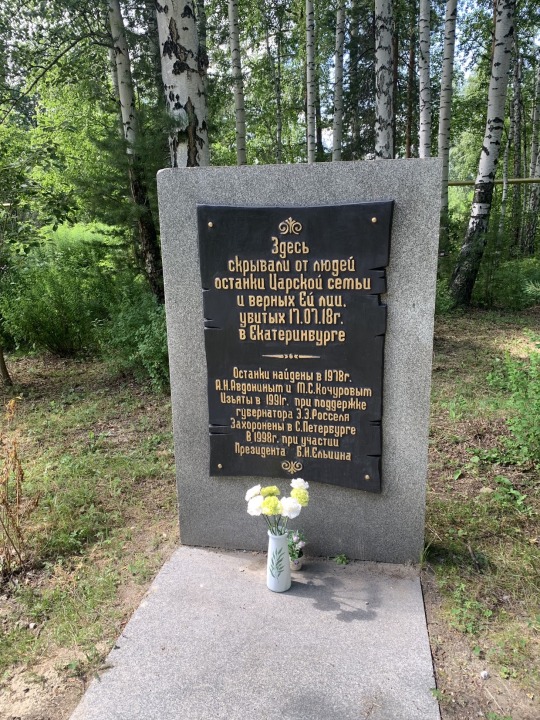
© Mark Bratchikov-Pogrebisskiy
The imperial family’s final burial place under a platform of railway ties was not a secret for all Soviet citizens – apparently, high-ranking party functionaries knew about it. Literary critics believe that this place was even shown to the poet Vladimir Mayakovsky in 1928. The result of the visit was his poem ‘The Emperor’.
The first to discover the royal remains in Soviet times was geologist Alexander Avdonin, a graduate of the Ural Mining Institute. In the 1960s, Avdonin met Gennady Lisin from the Ural Worker publishing house. Lisin claimed that he’d been a member of the Boy Scouts and had helped White investigators search for the burial site in his youth. It was he who showed Avdonin Ganina Yama.

© Mark Bratchikov-Pogrebisskiy
In 1976, Geli Ryabov, a screenwriter from Moscow and an honored employee of the Soviet Ministry of Internal Affairs, went to Avdonin. A few years later, Avdonin thoroughly examined the Old Koptyakov Road, along which the Bolsheviks had once transported the bodies of the Romanovs. In the town of Porosenkov Log near Ekaterinburg, he found the same railway ties. Under them, the geologist managed to find skulls and bones. Ryabov took two skulls to Moscow in the hope of conducting an examination. However, no one agreed to help him before the collapse of the USSR. Later, Avdonin and Ryabov decided to rebury the wooden box containing the remains near the place it was discovered – until better times.
In 1989, Ryabov told the Moscow News that he had found the imperial remains, and interest in the tsarist mystery grew rapidly among amateur geologists. Avdonin began to worry about the fate of the remains and wrote a letter to the chairman of the Supreme Soviet of the RSFSR, Boris Yeltsin, who instructed the governor of Sverdlovsk Region, Eduard Rossel, to deal with the issue.

© Mark Bratchikov-Pogrebisskiy
In 1993, Rossel was briefly the head of the Ural Republic, a de facto entity in the Russian Federation that was not provided for by the Constitution. The governor believed that the Urals should become more independent in economic and legislative terms. In November, the initiative was finally curtailed, and Rossel was dismissed. Ural historians and journalists suspect that the governor may have been using the royal remains as a bargaining chip with the federal authorities up until that moment.
In 1998, after numerous examinations, the remains were buried in the Peter and Paul Cathedral in St. Petersburg in the presence of Yeltsin. At that time, the Russian Orthodox Church did not recognize the authenticity of the remains, and Patriarch Alexy II did not attend the funeral.

© Mark Bratchikov-Pogrebisskiy
Among the discovered remains, two of the dead were missing. In 2007, a search team found the remains of Grand Duchess Maria and Tsarevich Alexei 75 meters from the main burial site.
In March 2022, ex-Metropolitan Hilarion of Volokolamsk, chairman of the Moscow Patriarchate’s Department for External Church Relations, stated that “We now have clear and sufficient evidence that the ‘Ekaterinburg remains’ are the genuine remains of members of the royal family… It seems to me that the arguments supporting the authenticity of the ‘Ekaterinburg remains’ significantly outwfeigh any arguments that could refute it.” The church could have officially recognized the authenticity of the remains at the Bishops’ Council in May, but this had to be postponed.

© Mark Bratchikov-Pogrebisskiy
Sixty years after the October Revolution, Ipatiev’s house was demolished. Yeltsin was then the first secretary of the Sverdlovsk Regional Committee of the CPSU. In 2003, a Church-on-Blood was erected on this site, and in 1992, the tradition of holding a penitential procession was born. Its current route was established in 1994.
The Romanov Memorial is now located in the Porosenkov Log tract. Ilya Korovin, the director of the memorial, who is a supporter of Avdonin’s theory concerning the preserved remains, told RT that the procession route does not include this cultural heritage site.

© Mark Bratchikov-Pogrebisskiy
In 2018, Patriarch Kirill participated in the procession. After four years, believers again walk around 20 kilometers from the Church-on-Blood to the monastery of the Holy Royal Passion-Bearers in the Ganina Yama tract. This year, there were 50,000 pilgrims, according to the St. Catherine’s Foundation.
In conversations with RT during the procession, believers shared their views on whether the Church should officially recognize the royal remains. Some believe this would be the right thing to do, putting an end to the ‘biggest crime’ in Russian history. Others, on the contrary, do not believe the remains found by Avdonin are authentic, holding that they were probably destroyed in Ganina Yama.
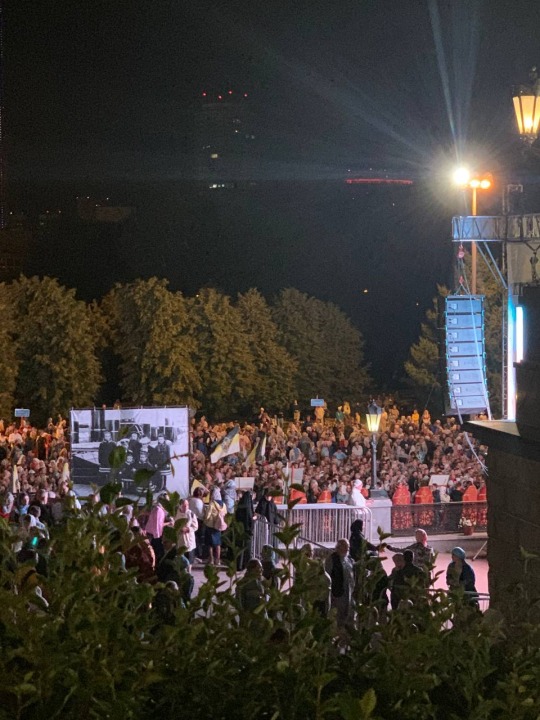
© Mark Bratchikov-Pogrebisskiy
The procession begins at 2:30am Ural time. It is headed by church leaders, followed by a long column of Orthodox Christians, who hail not only from Russia, but also from Western Europe, Latin America, and Asia. In less than four hours, the first pilgrims appear at the final point of the route – the monastery at Ganina Yama. Orthodox Christians in comfortable sneakers carrying bottles of water cheerfully sing “Lord, Jesus Christ, have mercy on us!” The former mine is now enclosed by a gallery filled with portraits of the royal passion-bearers and their faithful servants.
RT spoke with people born in the Urals who say that they participated in the procession as children, and now help their elderly parents walk along this long route.
— By Mark Bratchikov-Pogrebisskiy, a Moscow-based Journalist | RT | August 14, 2022
3 notes
·
View notes
Text
ET5 WebTrading platform:The Secret Ingredient of Brokerage Business - White Label solutions
The insights from the panel discussion at the iFX EXPO Cyprus 2023 provided valuable perspectives on the use and implications of White Label products in the Forex industry. Here's a summary of the key takeaways from the discussion, involving industry experts like Anastasia Taganova, Anton Sokolov, Dmitri Balabanov Makrides, Ran Strauss, and Michael Nichols: White Label Market Saturation: The market is saturated with White Label solutions, which reduces time-to-market for new businesses, especially startups that favor low-cost, plug-and-play solutions. Main Label vs. White Label: White Label solutions offer cost and time savings, making them ideal for startups. They provide a comprehensive solution allowing businesses to focus on growth and development. Main Label platforms offer more control and freedom but require more resources to manage. Customization Limitations: While White Label solutions offer extensive customization, it's not always free or all-inclusive. Pricing can vary for additional features, and some features may not be available due to provider policies. Applicability for Larger Brokers: Large brokerages often overlook White Label solutions due to perceived lack of justification. However, they can still use these solutions for testing or as a trial to assess platform suitability. Importance of Choosing the Right Technology Provider: For startup brokers, selecting a technology provider licensed under the same regulation is crucial. This ensures efficiency, regulatory compliance, and helps navigate future uncertainties. Trends in the White Label Market: Rapid integration of AI is a significant trend, with chatbots and machine learning becoming integral to Forex brokers' practices. Mobility has also become a norm, with a high percentage of trades originating from mobile platforms. Selecting Innovative Technology Providers: Choosing providers that are dedicated to innovation and can adapt to market growth is essential. Providers should evolve with market trends, offering mobile solutions, customizations, server options, and even exploring new concepts like prop trading. White Label Solutions by ET5: ET5 offers a range of white-label solutions, including trading simulators and crypto exchange platforms, designed for easy integration and customization. These solutions cater to a variety of trading activities and are equipped to support growth in different asset classes. The panel underscored the importance of White Label solutions in reducing barriers to entry for new brokers, offering cost-effective and efficient ways to start and grow in the Forex market. It also highlighted the need for brokers to choose technology providers that align with their regulatory needs and growth trajectories. White-Label Solutions: Companies like ET5 offer white-label solutions, including trading simulators, which can be customized and branded by brokers. These solutions are equipped with necessary integrations and support a wide range of trading activities. At ET5 trading platform, we’ve built a white-label market simulation solution for brokers and trading education institutions. In the case of trading educational institutions, they don’t even need to partner with real brokers or acquire a broker-dealer license to be able to each. The deployed front-end eliminates the need to integrate with other technology vendors. ET5 trading platform offers the entire set of white-label software to launch a crypto exchange in mere days.Our ET5 matching engine also comes with an admin panel for exchange staff. As a frontend, we offer ET5 trading platform —a white-label crypto trading platform with a modern and intuitive interface. ET5 trading platform comes with turnkey integrations with crypto liquidity providers and crypto wallets, so you don’t have to worry about any technological aspect. The ET5 trading platform Crypto exchange ecosystem allows trading margin and spot cryptocurrencies and crypto CFDs. The ecosystem will fully support and facilitate your growth if you expand your asset offering with, for example, FX pairs or spread bets.

1 note
·
View note
Text
ALMANACCO DEL 40° FESTIVAL DI MONTE-CARLO - EDIZIONE 2016

ALMANACCO DEL 40° FESTIVAL DI MONTE-CARLO – EDIZIONE 2016
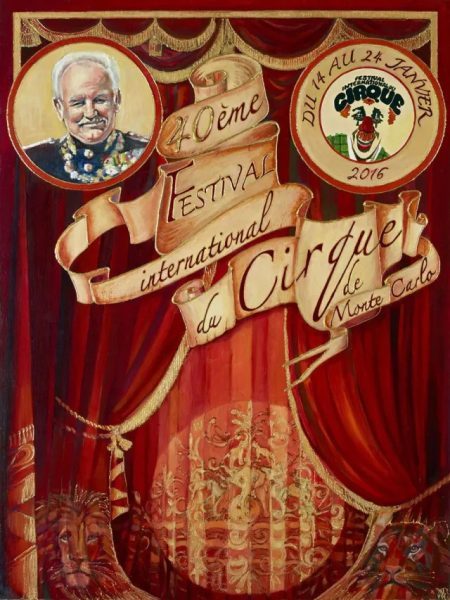
In occasione della 40° edizione del Festival il Principato ha battuto sé stesso proponendo l’edizione più sensazionale che si potesse immagine. Un’edizione senza competizione, che ha portato in scena tutti gli artisti premiati con Oro e Argento nelle precedenti edizioni ancora in attività per un omaggio al Circo senza precedenti. E per l’occasione anche artisti che non lavoravano più in pista sono tornati appositamente per questa edizione per dar vita a momenti iconici come quello dei tre domatori (ispirato ai “Tre Tenori) Pavlenko, Massimiliano Nones e Martin Lacey nella stessa gabbia. O il trio di clown composto da Housch-ma-Housch, Fumagalli e Nock. O ancora il quadro dei verticalisti con i Pellegrini, i Peres ed Encho, lo straordinario ritorno dei Rastelli (con Vittorio che eccezionalmente prese il ruolo del padre Alfredo nell’entrata) affiancati dal bianco Alexis. O ancora il quadro equestre che ha visto insieme Flavio Togni e Alex Gruss in un momento da brividi. David Larible, intanto proponeva il suo one man show al Teatro Principessa Grace. Questo è molto altro è stata la 40 edizione che nonostante non prevedesse la competizione, a sorpresa ha visto assegnare un Clown d’Oro alla Principesse Stephanie, aggiungendo emozioni indimenticabili a una serata leggendaria scolpita nella Storia del Circo.
ELENCO PARTECIPANTI
2016
FUMAGALLI & DARIS
CLOWN
SHCHERBACK & POPOV
MANO A MANO
PELLEGRINI BROTHERS
MANO A MANO
FLIGHT OF DESIRE
FANTASIA AEREA
TROUPE SOKOLOV
BASCULE
TROUPE ACROBATICA DI PECHINO
SALTI NEI CERCHI
TROUPE ACROBATICA DI PECHINO
DIABOLO
FLAVIO TOGNI
CAVALLERIA
FAMIGLIA CASSELLY
ELEFANTI
BELLO NOCK
CLOWN
ENCHO
EQUILIBRISTA
PERES BROTHERS
MANO A MANO
KELLY HUESCA
SAND ART
STARBUGS
COMICI ECCENTRICI
DUO SKATING PILAR
PATTINATORI ACROBATICI
ANASTASIA MAKEEVA
TESSUTI AEREI
KRIS KREMO
GIOCOLIERE
ROSI HOCHEGGER
CANI
HOUSCH MA HOUSCH
CLOWN
STEVE ELEKY
COMICO
TROUPE ACROBATICA DI CANTON
PASSO A DUE
WILLER NICOLODI
VENTRILOQUO
ALEXIS GRUSS
CAVALLERIA
CATWALL
TRAMPOLINO ELASTICO
LAURA MILLER
CERCHIO AEREO E ACQUA
I RASTELLI E TONITO ALEXIS
ENTRATA MUSICALE
TROUPE BINGO
FANTASIA AEREA
FLYING TABARES
TRAPEZIO VOLANTE
MARTIN LACEY JR
LEONI & LEONESSE
IL BALLETTO DEL CIRCO DI STATO DI MINSK
BALLERINE
PETIT GOUGOU
M. LOYAL
RETO PAROLARI
ORCHESTRA

S.A.S. PRINCIPESSA STEPHANIE RICEVE IL CLOWN D'ORO


CATWALL ACROBATIC
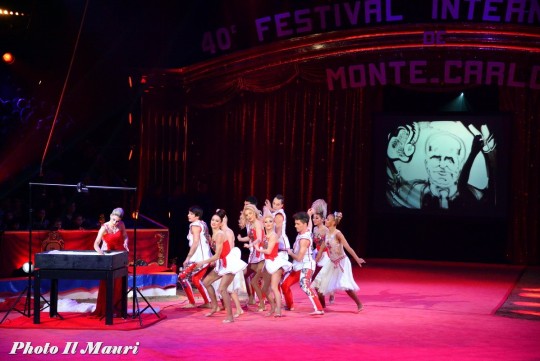
KELLY HUESCA & TROUPE BINGO

HOUSCH MA HOUSCH - BELLO NOCK - FUMAGALLI

TROUPE ACROBATICA DI PECHINO

ROSI HOCHEGGER

BINGO - STARBUGS - SKATING PILAR - SHCHERBACK & POPOV

FLAVIO TOGNI e ALEXIS GRUSS

WILLER NICOLODI
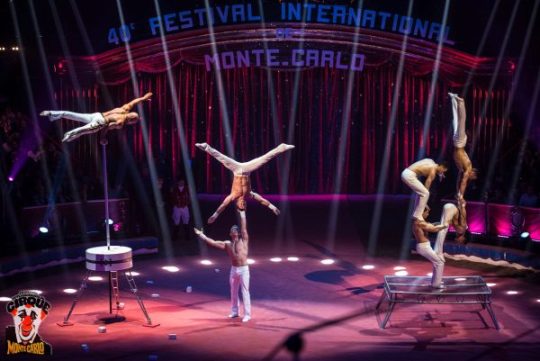
ENCHO - PERES BROTHERS - PELLEGRINI BROTHERS

FLYING TABARES
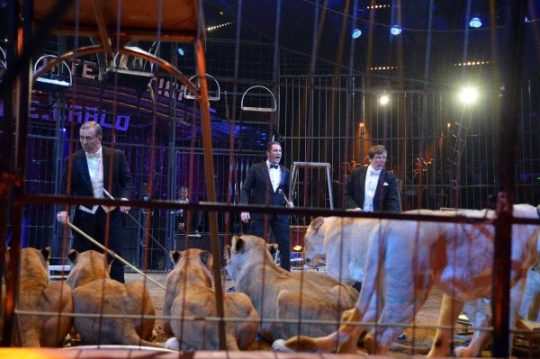
MARTIN LACEY JR - M. NONES - N. PAVLENKO

LAURA MILLER - ANASTASIA MAKEEVA
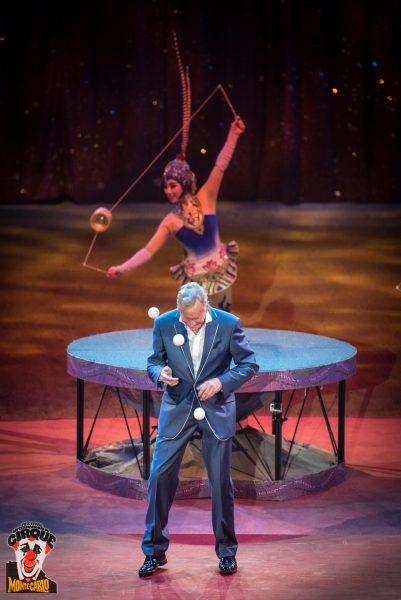
KRIS KREMO - TROUPE DI PECHINO

HOUSH MA HOUSH - STEVE ELEKY

FAMIGLIA CASSELLY
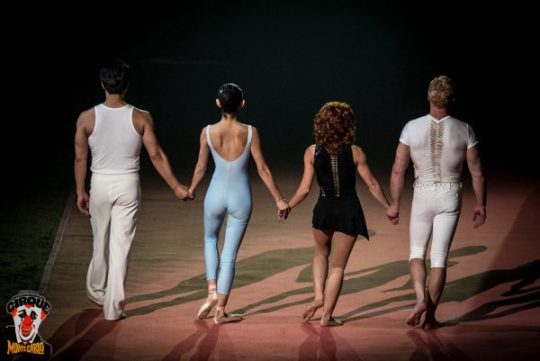
DUO DI CANTON - DESIRE OF FLIGHT

TROUPE SOKOLOV
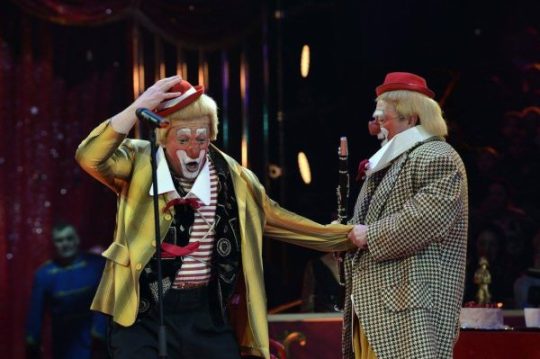
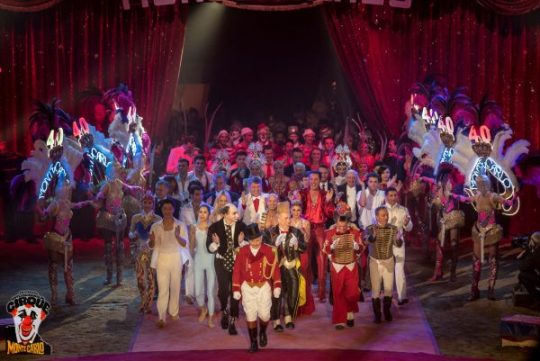

GUARDA LE PHOTOGALLERY DELLO SPETTACOLO
SHOW A
SHOW B
Foto Maurizio Colombo, Dario Duranti, Antonio Vanoli, Andrea Giachi, Charly Gallo e archivi Circusfans
Video Archivio Maurizio Colombo
Visitate la nostra sezione
ALMANACCO DEL FESTIVAL INTERNATIONAL DU CIRQUE DE MONTE-CARLO
ALMANACCO DEL 40° FESTIVAL DI MONTE-CARLO – EDIZIONE 2016
Info Festival Cirque de Monte Carlo
Se questo articolo ti è piaciuto condividilo sui tuoi social utilizzando i bottoni che trovi qui sotto
Read the full article
0 notes
Text

#empire of sin#rina kent#knox van doren#anastasia sokolov#ronan astor#teal van doren#read#currently reading#book review#reading#readers of tumblr#2023 reads#tumblr#tumblelog#tumblrpost#books#book blog#bookworm#book tumblr#tumblog#brb swooning#fictional men#fictional women#ugh i love them
17 notes
·
View notes
Text
Who is Oleg Sokolov's Student Lover: Anastasia Yeschenko Biography, Wiki, Age, Family, Obituary, Facebook, Instagram, Twitter and Fast Facts
Who is Oleg Sokolov’s Student Lover: Anastasia Yeschenko Biography, Wiki, Age, Family, Obituary, Facebook, Instagram, Twitter and Fast Facts
Anastasia Yeschenko Biography — Wiki
Anastasia Yeschenko is best known as the student lover of Russian military historian and professor Oleg Sokolov who killed and dismembered Yeschenko before throwing her body parts into the Moika River in St Petersburg, Russia.
Her severed head was found wrapped in an IKEA plastic bag in his plush apartment, while her torso and legs were all dredged from the…

View On WordPress
#Anastasia Yeschenko 24#Anastasia Yeschenko bio#Anastasia Yeschenko biography#Anastasia Yeschenko boyfriend#Anastasia Yeschenko cause of death#Anastasia Yeschenko death#Anastasia Yeschenko facebook#Anastasia Yeschenko family#Anastasia Yeschenko funeral#Anastasia Yeschenko head#Anastasia Yeschenko husband#Anastasia Yeschenko instagram#Anastasia Yeschenko obituary#Anastasia Yeschenko photo#Anastasia Yeschenko pictures#Anastasia Yeschenko sokolov#Anastasia Yeschenko student lover#Anastasia Yeschenko twitter#Anastasia Yeschenko wiki#Anastasia Yeschenko wikipedia#how old is Anastasia Yeschenko#who is Anastasia Yeschenko
0 notes
Photo
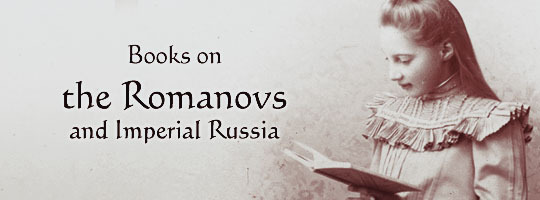
Here is a list of books you might want to read if you are interested in the Romanov dynasty and the country and society they goverened. I have read some, I own most and some may be of warying quality and reliability. Some include periods before and after the Russian Empire. Some could be fitted into more than one cathegory. A few are not available in English.I will try to update this list from time to time as I find new books or new books become published. Enjoy!
Diaries and correspondence of the Romanovs
The Memoirs of Catherine the Great
Love and Conquest: Personal Correspondence of Catherine the Great and Prince Grigory Potemkin
Chere Annette: Letters from St. Petersburg, 1820-1828: The Correspondence of the Empress Maria Feodorovna to Her Daughter the Grand Duchess Anna Pavlovna
A Lifelong Passion: Nicholas and Alexandra: Their Own Story
Romanov Family Yearbook: On This Date in Their Own Words
The Letters of Tsar Nicholas and Empress Marie
The Correspondence Of The Empress Alexandra Of Russia With Ernst Ludwig And Eleonore, Grand Duke And Duchess Of Hesse
The Complete Wartime Correspondence of Tsar Nicholas II and the Empress Alexandra: April 1914-March 1917
In the Steps of the Romanovs: Final Two Years of the Last Russian Imperial Family (1916-1918)
The Last Diary of Tsaritsa Alexandra
The Diary of Olga Romanov: Royal Witness to the Russian Revolution
Journal of a Russian Grand Duchess: Complete Annotated 1913 Diary of Olga Romanov, Eldest Daughter of the Last Tsar
Tatiana Romanov, Daughter of the Last Tsar: Diaries and Letters, 1913���1918
Maria Romanov: Third Daughter of the Last Tsar, Diaries and Letters, 1908–1918
1913 Diary of Grand Duchess Maria Nikolaevna: Complete Tercentennial Journal of the Third Daughter of the Last Tsar
Maria and Anastasia: The Youngest Romanov Grand Duchesses In Their Own Words
Correspondence of the Russian Grand Duchesses: Letters of the Daughters of the Last Tsar
Michael Romanov: Brother of the Last Tsar Diaries and Letters, 1916-1918
Diaries and correspondence of other people
Russian journal of Lady Londonderry, 1836-37
Letters from Russia
The Diaries of Sofia Tolstoy
Letters from St Petersburg: A Siamese Prince at the Court of the Last Tsar
The Romanovs Under House Arrest: From the 1917 Diary of a Palace Priest
Private Diary of Mathilde Kschessinska
A Countess in Limbo: Diaries in War & Revolution; Russia 1914-1920, France 1939-1947
Memoirs by the Romanovs
Once a Grand Duke
Always a Grand Duke
25 Chapters of My Life
Education of a Princess
A Princess in Exile
A Romanov Diary: The Autobiography of H.I.& R.H. Grand Duchess George
My life in Russia's service--then and now
Memories In The Marble Palace
Memoirs by other people
The Memoirs of Princess Dashkova
Lost Splendor
Memories of the Russian Court
My Mission to Russia and Other Diplomatic Memories
An Ambassador's Memoirs
The Real Tsaritsa
Thirteen Years at the Russian Court
The False Anastasia
Six Years at the Russian Court
Before the Storm
The Life and Tragedy of Alexandra Feodorovna Empress of Russia
Left Behind
At the Court of the Last Tsar
Memories of Russia 1916-1919
The Emperor Nicholas II: As I Knew Him
The Sokolov Investigation of the Alleged Murder of the Russian Imperial Family
The Russia That I Loved
Dancing in Petersburg: The Memoirs of Kschessinska
On the Estate: Memoirs of a Russian Lady before the Revolution
Theater Street
The Other Russia: The Experience of Exile
Russia Through Women's Eyes: Autobiographies from Tsarist Russia
The Fall of the Romanovs: Political Dreams and Personal Struggles in a Time of Revolution
Tommorow Will Come
Fanny Lear: Love and Scandal in Tsarist Russia
The Coronation of Tsar Nicholas II
Days of the Russian Revolution: Memoirs from the right, 1905-1917
The House by the Dvina: A Russian Childhood
Under Three Tsars
Last days at Tsarskoe Selo
Last Years of the Court at Tsarskoe Selo
The Real Romanovs
Biographies of the Romanovs and general topics concerning them
The Romanovs: Autocrats of All the Russias
The Romanovs: 1613-1918
The Romanovs
The Romanovs: Ruling Russia 1613-1917
Secret Lives of the Tsars: Three Centuries of Autocracy, Debauchery, Betrayal, Murder, and Madness from Romanov Russia
The Tragic Dynasty: A History of the Romanovs
The Family Romanov: Murder, Rebellion, and the Fall of Imperial Russia
Romanov Autumn: Stories from the Last Century of Imperial Russia
The Romanovs, 1818–1959: Alexander II of Russia and His Family
Alexis, Tsar of all the Russias
Sophia: Regent of Russia, 1657-1704
Peter the Great: His Life and World
Peter the Great
Terrible Tsarinas: Five Russian Women in Power
Elizabeth and Catherine: Empresses of All the Russias
Catherine the Great
Catherine the Great: Portrait of a Woman
Catherine the Great & Potemkin: the imperial love affair
Catherine the Great: Love, Sex, and Power
Great Catherine: The Life of Catherine the Great, Empress of Russia
The Empress of Art: Catherine the Great and the Transformation of Russia
Alexander I: The Tsar Who Defeated Napoleon
Alexander I: Tsar of War and Peace
Alexander of Russia: Napoleon's Conqueror
Nicholas I and Official Nationality in Russia 1825 - 1855
Nicholas I: Emperor and Autocrat of All the Russias
Becoming a Romanov. Grand Duchess Elena of Russia and her World
Alexander II: The Last Great Tsar
Katia: Wife Before God
Alexander III: His Life and Reign
Little Mother of Russia: A Biography of the Empress Marie Feodorovna
Nicholas II: Emperor of All the Russias
Nicholas II: Last of the Tsars
The Last of the Tsars : Nicholas II and the Russian Revolution
The Last Tsar: The Life and Death of Nicholas II
King, Kaiser, Tsar: Three Royal Cousins Who Led The World To War
A Gathered Radiance: The Life of Alexandra Romanov, Russia's Last Empress
The Last Empress: The Life and Times of Alexandra Feodorovna, Tsarina of Russia
Alexandra
Alexandra: The Last Tsarina
Nicholas and Alexandra
Alix and Nicky: The Passion of the Last Tsar and Tsarina
The Last Tsar & Tsarina
The Four Graces: Queen Victoria's Hessian Granddaughters
The Imperial Tea Party: Family, Politics and Betrayal: the Ill-Fated British and Russian Royal Alliance
From Splendor to Revolution: The Romanov Women, 1847-1928
Born to Rule: Five Reigning Consorts, Granddaughters of Queen Victoria
Queen Victoria and The Romanovs: Sixty Years of Mutual Distrust
Queen Victoria's Matchmaking: The Royal Marriages that Shaped Europe
Imperial Requiem: Four Royal Women and the Fall of the Age of Empires
The Romanov Royal Martyrs: What Silence Could Not Conceal
The Romanovs: Family of Faith and Charity
The Romanovs: The Final Chapter
The Last Days of the Romanovs: Tragedy at Ekaterinburg
The Fate of the Romanovs
The Murder of the Romanovs
The House of Special Purpose
The Murder of the Tsar
Alexei: Russia's Last Imperial Heir: A Chronicle of Tragedy
A Guarded Secret : Tsar Nicholas II, Tsarina Alexandra and Tsarevich Alexei's Hemophilia
The Romanov Sisters: The Lost Lives of the Daughters of Nicholas and Alexandra
The Grand Dukes
The Grand Dukes - Sons And Grandsons Of Russia's Tsars
The Other Grand Dukes: Sons and Grandsons of Russia's Grand Dukes
White Crow: The Life and Times of the Grand Duke Nicholas Mikhailovich Romanov, 1859-1919
The Grand Duchesses: Daughters & Granddaughters of Russia's Tsars
Once a Grand Duchess: Xenia, Sister of Nicholas II
Michael and Natasha: The Life and Love of Michael II, the Last of the Romanov Tsars
The Last Grand Duchess: Her Imperial Highness Grand Duchess Olga Alexandrovna
Olga Romanov: Russia's Last Grand Duchess
Ella: Princess, Saint and Martyr
Elizabeth, Grand Duchess of Russia
Grand Duchess Elizabeth of Russia: New Martyr of the Communist Yoke
Grand Duchess Marie Pavlovna
Princess Victoria Melita
A Fatal Passion: The Story of the Uncrowned Last Empress of Russia
Gilded Prism: The Konstantinovichi Grand Dukes & The Last Years Of The Romanov Dynasty
Death of a Romanov Prince
A Poet Among the Romanovs: Prince Vladimir Paley
Princesses on the Wards: Royal Women in Nursing through Wars and Revolutions
The Romanovs: The Way It Was
Behind the Veil at the Russian Court
The Flight of the Romanovs: A Family Saga
Russia and Europe: Dynastic Ties
Biographies of other people
The Tsar's Doctor: The Life and Times of Sir James Wylie
The Romanovs & Mr Gibbes: The Story of the Englishman Who Taught the Children of the Last Tsar
An Englishman in the Court of the Tsar: The Spiritual Journey of Charles Syndney Gibbes
The Forgotten Tutor: John Epps and the Romanovs
The Rasputin File
Rasputin: The Untold Story
Rasputin: Rascal Master
Rasputin: The Biography
Rasputin: a Short Life
The Murder of Grigorii Rasputin: A Conspiracy That Brought Down the Russian Empire
The Man Who Killed Rasputin: Prince Felix Youssoupov and the Murder That Helped Bring Down the Russian Empire
The Princess of Siberia
Angel of Vengeance: The Girl Who Shot the Governor of St. Petersburg and Sparked the Age of Assassination
Imperial Dancer: Mathilde Kschessinska and the Romanovs
Diaghilev: A Life
Nijinsky: A Life of Genius and Madness
The Russian Album
Russian Blood
Tolstoy: A Russian Life
The Pearl: A True Tale of Forbidden Love in Catherine the Great's Russia
Katya and the Prince of Siam
The Defiant Life of Vera Figner: Surviving the Russian Revolution
Pushkin: A Biography
Photoalbums, cofee-table books
The Camera and the Tsars: The Romanov Family in Photographs
The Romanov Family Album
Tsar: The Lost World of Nicholas and Alexandra
The Romanovs: Love, Power and Tragedy
The Regalia of the Russian Empire
The Sunset of the Romanov Dynasty
The Summer Palaces of the Romanovs: Treasures from Tsarskoye Selo
Royal Russia: The Private Albums of the Russian Imperial Family
Russia: Art, Royalty and the Romanovs
Nicholas II: The Last Tsar
Nicholas and Alexandra: The Family Albums
The Last Tsar
Romanovs Revisited
The Private World of the Last Tsar: In the Photographs and Notes of General Count Alexander Grabbe
The Jewel Album of Tsar Nicholas II: A Collection of Private Photographs of the Russian Imperial Family
Anastasia's Album
Lost Tales: Stories for the Tsar's Children
The Last Courts of Europe: Royal Family Album 1860-1914
Dear Ellen (Royal Europe Through the Photo Albums of Grand Duchess Helen Vladimirovna of Russia)
Royal Gatherings (Who is in the Picture? Volume 1: 1859-1914)
Jewels of the Tsars: The Romanovs and Imperial Russia
Jewels from Imperial St. Petersburg
Postcards from the Russian Revolution
Before the Revolution: A View of Russia Under the Last Czar
Twilight of the Romanovs: A Photographic Odyssey Across Imperial Russia
The Romanov Legacy: The Palaces of St. Petersburg
Moscow: Splendours of the Romanovs
Fabergé, Lost and Found: The Recently Discovered Jewelry Designs from the St. Petersburg Archives
Art of Fabergé
Faberge: Treasures of Imperial Russia
Artistic Luxury: Fabergé, Tiffany, Lalique
Russian Imperial Style
A Smolny Album: Glimpses into Life at the Imperial Educational Society of Noble Maidens
Konstantin Makovsky: The Tsar’s Painter in America and Paris
Anna Pavlova: Twentieth Century Ballerina
Tamara Karsavina: Diaghilev's Ballerina
General history and specific events
Russian Chronicles
Russia's First Civil War: The Time of Troubles and the Founding of the Romanov Dynasty
The Court of Russia in the Nineteenth Century; Volume 1
The Court of Russia in the Nineteenth Century; Volume 2
The Crimean War: A History
Internal Colonization: Russia's Imperial Experience
The Conquest of a Continent: Siberia and the Russians
Red Fortress: History and Illusion in the Kremlin
Sunlight at Midnight: St. Petersburg and the Rise of Modern Russia
St Petersburg: Three Centuries of Murderous Desire
The Shadow of the Winter Palace: Russia's Drift to Revolution 1825-1917
Society and lifestyle
Land of the Firebird: The Beauty of Old Russia
Serfdom, Society, and the Arts in Imperial Russia: The Pleasure and the Power
Lord and Peasant in Russia from the Ninth to the Nineteenth Century
A Bride for the Tsar: Bride-Shows and Marriage Politics in Early Modern Russia
Origins of the Russian Intelligentsia: The Eighteenth-Century Nobility
The Icon and the Axe: An Interpretive History of Russian Culture
The Court of the Last Tsar: Pomp, Power and Pageantry in the Reign of Nicholas II
Scenarios of Power: Myth and Ceremony in Russian Monarchy, Vol. 1
Scenarios of Power: Myth and Ceremony in Russian Monarchy, Vol. 2
Pavlovsk : The Life of a Russian Palace
Entertaining Tsarist Russia: Tales, Songs, Plays, Movies, Jokes, Ads, and Images from Russian Urban Life, 1779-1917
A Social History of the Russian Empire, 1650-1825
Slavophile Empire: Imperial Russia's Illiberal Path
Russia at Play
Women In Russian History: From The Tenth To The Twentieth Century
St. Petersburg: A Cultural History
Russian Peasant Women
Romanov Riches: Russian Writers and Artists Under the Tsars
The Magical Chorus: A History of Russian Culture from Tolstoy to Solzhenitsyn
Family in Imperial Russia
Village Life in Late Tsarist Russia
Imperial Crimea: Estates, Enchantments and the Last of the Romanovs
Russia on the Eve of Modernity: Popular Religion and Traditional Culture Under the Last Tsars
The Martha-Mary Convent: and Rule of St. Elizabeth the New Martyr
The Way of a Pilgrim
Icon and Devotion: Sacred Spaces in Imperial Russia
Natasha's Dance: A Cultural History of Russia
Valse Des Fleurs: A Day in St. Petersburg in 1868
Murder Most Russian: True Crime and Punishment in Late Imperial Russia
What Life Was Like in the Time of War and Peace: Imperial Russia, AD 1696-1917
When Miss Emmie Was in Russia: English Governesses Before, During and After the October Revolution
From Cradle to Crown: British Nannies and Governesses at the World's Royal Courts
What Became Peters Dream: Court Culture in the Reign of Nicholas II
Faberge's Eggs: The Extraordinary Story of the Masterpieces That Outlived an Empire
Beauty in Exile: The Artists, Models, and Nobility who Fled the Russian Revolution and Influenced the World of Fashion
Revolution and its general aftermath
Spies and Commissars: The Early Years of the Russian Revolution
A People's Tragedy: The Russian Revolution: 1891-1924
Interpreting the Russian Revolution: The Language and Symbols of 1917
The Russian Court at Sea: The Voyage of HMS Marlborough
Former People: The Final Days of the Russian Aristocracy
The Downfall of Russia
Doomsday 1917: The Destruction of Russia's Ruling Class
Caught in the Revolution: Petrograd, Russia, 1917
To Free the Romanovs: Royal Kinship and Betrayal in Europe 1917-1919
The Race to Save the Romanovs: The Truth Behind the Secret Plans to Rescue Russia's Imperial Family
Students, Love, Cheka and Death
Red Victory: A History of the Russian Civil War, 1918-1921
Conspirator: Lenin in Exile
Hidden Treasures of the Romanovs
Romanoff Gold: The Lost Fortunes of the Tsars
Russia Abroad: Prague and the Russian Diaspora, 1918–1938
Bread of Exile
The Many Deaths of Tsar Nicholas II: Relics, Remains and the Romanovs
Saving The Tsars' Palaces
Catalogues
Kejserinde Dagmar
Nicholas And Alexandra: The Last Tsar And Tsarina
Russian Splendor: Sumptuous Fashions of the Russian Court
At The Russian Court: Palace And Protocol In The 19th Century
History of Russian Costume from the Eleventh to the Twentieth Century
Collections of the Romanovs: European Arts from the State Hermitage Museum, St Petersburg
Magnificence of the Tsars: Ceremonial Men's Dress of the Russian Imperial Court, 1721-1917
Conspiracy and pretenders
Imperial Legend: The Mysterious Disappearance of Tsar Alexander I
The File on the Tsar
The Escape of Alexei, Son of Tsar Nicholas II: What Happened the Night the Romanov Family Was Executed
The Romanov Conspiracies
I am Anastasia; The Autobiography of the Grand Duchess of Russia.
The Resurrection of the Romanovs: Anastasia, Anna Anderson, and the World's Greatest Royal Mystery
A Romanov Fantasy: Life at the Court of Anna Anderson
The Secret Plot to Save the Tsar: The Truth Behind the Romanov Mystery
The Quest for Anastasia: Solving the Mystery of the Lost Romanovs
695 notes
·
View notes
Note
Fun fact + all the Vampirinos (or whichever)
You said all, so I am 100% using this as an excuse to give a trivia fact about every vampire who had a speaking role so far!
Gonna be under the cut, though, since I have too many characters. Also if I missed someone, I’m sorry. I have too many damn characters:
DRACULA’S COVEN
Amalric Dracula: He did not actually like wearing capes all that much. He preferred coats.
Carlos Caballero: Carlos has severe intimacy issues due to, when he was a mortal, consistently walking in on his fiancee cheating on him.
Dahlia Rosemont: Dahlia has a brand right above her right shoulder blade, a “CL.” This is because Cyrus Lovelace often branded his more uppity slaves.
Eric Madden: He has a seething hatred of Ronald Reagan, and frequently prints out photos of him to stick on the dartboard in his room. Also, his first kiss with another man was to the song “Purple Rain.”
Macheath Sharpe: They know how to play a piano, and wish Armstrong would get one for the bar (even though there isn’t much room for one).
Matt Black: Matt’s actually partially based on and named after my brother! My brother came up with his power.
Nadia Shibani: She has had her silver hair since birth. Her mortal mother, Abla, thought this meant she was destined for greatness.
Rose Milliner: Rose sometimes spells out words syllable by syllable because that’s what she did when she taught her former caretaker Orlok how to speak again (he hadn’t spoken in a very long time when he met Rose).
Sakura Himura: She was a lot less bitter and argumentative when she first joined the coven. In fact, she was a lot more confident, having come off of a very successful run of walking the Earth with her sister and helping people wherver she went.
Yuriko Himura: Her power to heal people and things by punching them is born from her innate desire to help others coupled with her suppressed anger.
Eve’s Coven
Amon: He is a very skilled chess player.
Dallas Ryder: He tried to kiss Amon after he was turned by him. Amon turned him down very gently.
Jojo Faust: He tends to prefer men, but when he falls for a girl, he falls very hard (as you can see with what happened with Gabby, though that’s actual love there and not just thinking she’s hot).
Marianna Cross: I wish I could tell you why she’s called “Bloody Mary,” but that’s being saved for a later chapter. I will say that it was born from a cruel nickname for her when she was at Dracula’s school, but she internalized it and twisted it to make it her vampire power after she was turned (she can travel through mirrors).
Nestor Sokolov: He still hates capitalism and views communism as a superior alternative, though he has no love for the USSR (considering how they abandoned him to die after his shuttle crashed).
Rex Hart: His favorite band is Fleetwood Mac. His top five songs are “Everywhere,” “Gypsy,” “Dreams,” “Tusk,” and “The Chain,” in that order.
Rhapsody von Braun: She likes smoking weed and dropping acid. She has also tried cocaine, but that was after becoming a vampire.
Other
Grigori Rasputin: He was incredibly flattered by Boney M’s song, and it has consistently been his ringtone. He also thinks the movie Anastasia is hilarious.
Mara Silver: Her name is short for “Marama.” Only her dad calls her that, and very rarely too.
Rika: She is actually very good at singing due to taking lessons as a child and played soccer when she was in high school.
And here’s a bonus! Jack Fairchild has a foot fetish. This is based on a joke my wife made and that I ran with. It may not come up in canon, but it’s canon as far as I’m concerned.
4 notes
·
View notes
Text
Sydney Gibbes' description of Olga Nikolaevna, given to Nikolai Sokolov during the murder investigation
The Grand Duchess Olga Nicholaevna was about twenty-three years old, she was fair and had the lightest hair in the family. After her illness she got much thinner. She had beautiful blue eyes. All her personality was seen in her eyes. She was straight, just, honest, simple, sincere and kind. She was easily irritated and her manners were a little harsh. She was a good musician. She had a talent for music. She composed, though I do not think she wrote poetry. I believe that [Anastasia] Hendrikova wrote some poetry, as she was well able to do. The Grand Duchess Olga was very modest. She liked simplicity and did not pay much attention to dress. Her morals reminded me of those of her father.


SOURCE: The Last Days of the Romanovs, published 1920, George Gustav Telberg, Robert Wilton, Nikolai Sokolov, ch. Examination of Mr. Gibbes
PHOTOS: Olga Nikolaevna during a English lesson with Sydney Gibbes in the classroom, circa 1913-14, GARF. Olga Nikolaevna with her father, Nicholas II, by the tennis courts, circa 1914
#Olga Nikolaevna#Nicholas II#Sidney Gibbes#Sydney Gibbes#sources#descriptions#Anastasia Hendrikova#Nastenka
19 notes
·
View notes
Text
I am outraged that the murderess Oleg Sokolov justifies his crime by the fact that it was provoked by the victim. He dismembered and threw into the river his girlfriend, whom he molested and seduced, and now calls her a monster and demands sympathy. This is cynicism. Anastasia is dead and will not answer this terrible man. This is terrible.

4 notes
·
View notes
Photo

[TASK 195: YAKUT]
In celebration of May being Asian American Heritage Month, there’s a masterlist below compiled of over 60+ Yakut faceclaims categorised by gender with their occupation and ethnicity denoted if there was a reliable source. If you want an extra challenge use random.org to pick a random number! Of course everything listed below are just suggestions and you can pick whichever faceclaim or whichever project you desire.
Any questions can be sent here and all tutorials have been linked below the cut for ease of access! REMEMBER to tag your resources with #TASKSWEEKLY and we will reblog them onto the main! This task can be tagged with whatever you want but if you want us to see it please be sure that our tag is the first five tags, @ mention us or send us a messaging linking us to your post!
THE TASK - scroll down for FC’s!
STEP 1: Decide on a FC you wish to create resources for! You can always do more than one but who are you starting with? There are links to masterlists you can use in order to find them and if you want help, just send us a message and we can pick one for you at random!
STEP 2: Pick what you want to create! You can obviously do more than one thing, but what do you want to start off with? Screencaps, RP icons, GIF packs, masterlists, PNG’s, fancasts, alternative FC’s - LITERALLY anything you desire!
STEP 3: Look back on tasks that we have created previously for tutorials on the thing you are creating unless you have whatever it is you are doing mastered - then of course feel free to just get on and do it. :)
STEP 4: Upload and tag with #TASKSWEEKLY! If you didn’t use your own screencaps/images make sure to credit where you got them from as we will not reblog packs which do not credit caps or original gifs from the original maker.
THINGS YOU CAN MAKE FOR THIS TASK - examples are linked!
Stumped for ideas? Maybe make a masterlist or graphic of your favourite faceclaims. A masterlist of names. Plot ideas or screencaps from a music video preformed by an artist. Masterlist of quotes and lyrics that can be used for starters, thread titles or tags. Guides on culture and customs.
Screencaps
RP icons [of all sizes]
Gif Pack [maybe gif icons if you wish]
PNG packs
Manips
Dash Icons
Character Aesthetics
PSD’s
XCF’s
Graphic Templates - can be chara header, promo, border or background PSD’s!
FC Masterlists - underused, with resources, without resources!
FC Help - could be related, family templates, alternatives.
Written Guides.
and whatever else you can think of / make!
MASTERLIST!
F:
Kjuregej / Alexandra Kjuregej Argunova (1938) Yakut - actress, musician, costume designer, and painter.
Zoya Basharina (1945) Yakut - writer.
Isabella Nikolaeva (1950) Yakut - actress.
Stepanida Borisova (1950) Yakut - singer.
Natalya Kiryushkina (1951) Yakut - actress.
Albina Borisova (1952) Yakut - writer.
Natalia Kharlampieva (1952) Yakut - poet.
Aita Shaposhnikova (1957) Yakut - writer.
Saraa / Sarantuya (1970) Yakut / Mongolian - singer.
Tamara Obutova (1982) Yakut - actress.
Dalaana / Natalya Yakovleva (1983) Yakut - singer.
Evgenia Arbugaeva (1985) Yakut - photographer.
Olena Uutai (1986) Yakut - singer and khomus player.
Polina Protodyakonova (1987) Yakut - model.
Christina Sokolova (1990) Yakut - model and tv presenter.
Irina Duskulova (1992) Yakut / Yukaghir - singer-songwriter.
Natalya Stroeva (1999) Yakut - model and Miss World Russia 2018.
Saydyy Kuo Fedorova (?) Yakut - singer and khomus player.
Kyunney / Ulyana Sergucheva (?) Yakut - singer-songwriter and rapper.
Yuliyana Krivoshapkina (?) Yakut - singer and khomus player.
Valeria Mironova (?) Yakut - singer-songwriter and pianist.
Albina Degtyareva (?) Yakut - singer and khomus player.
Feodosia Ivanova (?) Yakut - actress.
Varvara Stepanova (?) Yakut - singer and khomus player.
Anastasia Sanitarova (?) Yakut / Slav Russian - singer and model.
Chyskyyrai (?) Yakut - singer and khomus player.
Alisa Savvinova (?) Yakut - singer and khomus player.
Anastasia Gruzdeva (?) Yakut - model.
Yana-Maria Irnazarova (?) Yakut - model.
Nariyana Renanto (?) Yakut - singer and khomus player.
Sardaan Koryakina (?) Yakut - model.
Lena Spiridonova (?) Yakut - singer.
Archylaana Lukachevskaya (?) Yakut - singer.
Yuliya Ivanovska (?) Yakut - model.
Evgenia Gunina (?) Yakut - model.
Sardana Syromyatnikova (?) Yakut - model.
F - Athletes:
Maria Gushchina (1995) Yakut / Slav Russian - sport shooter.
Violetta Ivanova (?) Yakut - gymnast.
Svetlana Kirillina (?) Yakut - taekwondo practitioner.
Irina Efimova (?) Yakut - rower.
M:
Eduard Yefimovich Alekseyev (1937) Yakut - writer.
Mikhail Aprosimov (1950) Yakut - actor.
Spiridon Shishigin (1950) Yakut - singer and khomus player.
Eduard Ondar (1971) Yakut / Tuvan - actor.
Aleksey Shutov (1975) Yakut - actor.
Kostas Marsaan (1976) Yakut - director.
Lyubov Borisova (1982) Yakut - filmmaker.
Stepan Burnashev (1983) Yakut - director and producer.
AMIKAN / Lesha Lebedev (?) Yakut - singer and guitarist.
Peter Ogotoyev (?) Yakut - singer and khomus player.
Stepan Petrov (?) Yakut - actor.
Afanasiy Kylaev (?) Yakut - actor.
Ivan Konstantinov (?) Yakut - actor.
Sergei Egorov (?) Yakut - actor.
Ivan Alekseyev (?) Yakut - singer and khomus player.
M - Athletes:
Stanislav Selyanin (1936) Yakut - speed skater.
Pavel Pinigin (1953) Yakut - wrestler.
Irek Zinnurov (1969) Yakut - water polo player.
Sergey Shishkin (1973) Yakut - footballer.
Vasilii Egorov (1993) Yakut - boxer.
Andrei Kuzmenko (1996) Yakut - ice hockey player.
Artyom Sokolov (2003) Yakut - footballer.
7 notes
·
View notes
Photo

Hello everyone!
Hope that you are as excited as we are with the main dropping tomorrow night! We have been working tirelessly behind the scenes to get all our biographies finished, and we thought we would give you a sneak peek underneath the cut for the proposed order for when each one will be released. We will have two come out per day, and it will be one Reaper and one Scarlet Angel. We will allow requests for characters you are interested in to come out earlier and try to accommodate them whenever it’s possible. If we make any changes we will let you know!
— Prochnost Admins
FRIDAY 22ND MAY
Isaac Faulkner
Adelaide Leclair
SATURDAY 23RD MAY
Masha Vetrova
Antonio Martinez
SUNDAY 24TH MAY
Mateo Reyes
Raven Mirsky
MONDAY 25TH MAY
Katia Zharkova
Tanya Orlova
TUESDAY 26TH MAY
Francesco Russo
Anastasia Sokolova
WEDNESDAY 27TH MAY
Ivan Sokolov
Yelena Orlova
THURSDAY 28TH MAY
Leonard Haas
Alexei Petrov
FRIDAY 29TH MAY
Kalev Raud
Theo Alexeeva
SATURDAY 30TH MAY
Dimitri Bekhterev
Sofia Markova
SUNDAY 31ST MAY
Sebastien Dupont
Irina Volkova
MONDAY 1ST JUNE
Gabriel Devillers
Evelina Morozova
TUESDAY 2ND JUNE
Ryker Voight
Theresa Martin
4 notes
·
View notes